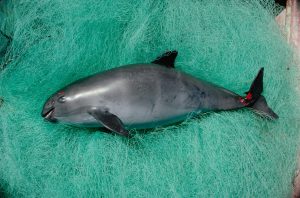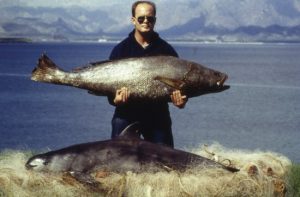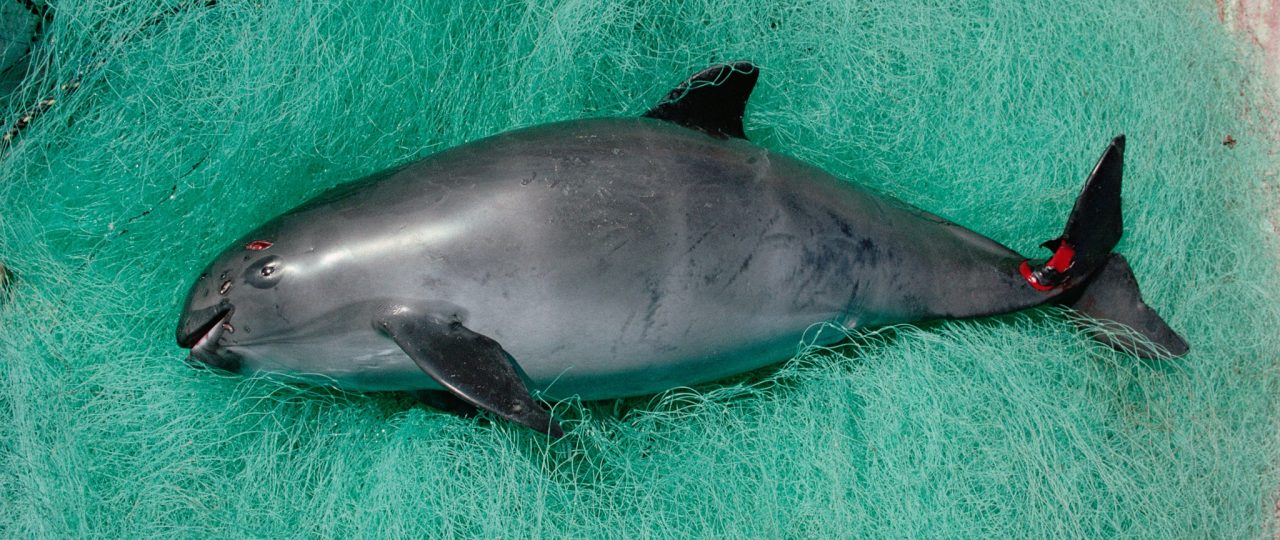The last of the vaquita
Only 30 remain in the wild
The vaquita, the world’s smallest porpoise, is on the brink of extinction. Last week, it was announced that 30 of these porpoises remain in the wild.1 This child-sized porpoise is a species only found in the waters of Mexico’s Upper Gulf of California.2 The vaquita has been listed as critically endangered since 1996.2 In 1997 the population estimated at 600 but since then has only declined.1 Last year there were approximately 60 individuals in the wild.1 And now, only half of those remain.

A vaquita killed by getting caught in fishing nets. Photo from National Geographic.

The geographical range of the vaquita. Photo from National Geographic.
Why are their numbers declining so rapidly?
The single biggest threat to the vaquita is getting caught in illegal gillnets, which are used to catch another critically endangered species, the totoaba fish.3 The totoaba is also a species that is found nowhere else in the world except for the waters of the Gulf of California in Mexico.3 These fish are highly valuable because their swim bladders are considered a delicacy in Chinese culture, going for as much as $100,000 in the Chinese black market.3 The demand for these swim bladders and the incentive to fish them is incredibly high. Thus, the vaquita, that swim in the same waters that these gillnets are set out in, are being caught, suffocated, and drowned as unintentional bycatch.3

A totoaba fish and vaquita both caught by the same net. Photo from WWF Mexico.

Dried totoaba swim bladder, a highly valuable commodity in China. Photo from EIA.
Is it possible to save the world’s most endangered marine mammal from extinction?
There have been talks of capturing a few of the remaining porpoises to captively breed them. 2 This plan is controversial because capturing these porpoises poses many risks and there is no way to know if they will even do well or breed in captivity. The plan would be to house them in captivity until we can guarantee their release back into a 100% gillnet-free environment.2
It is crucial that members of the scientific community as well as a concerned public population continue to pressure the Mexican government to enforce effective and permanent bans on illegal fishing. Not only the implementation of law, but the effective enforcement and monitoring of it as well. The Mexican government also needs to work with fishing communities to find alternative economical and ecological sustainable ways of life and to discourage illegal fishing of endangered species. The Gulf of California must be free from destructive fishing methods. The totoaba and vaquita depend on it. Until there is a complete and permanent abolishment from illegal totoaba fishing and the disappearance of gillnets in the Gulf of California, the remaining vaquitas will surely vanish.
After the extinction of the Chinese river dolphin in 20064, I fear we are about to lose another cetacean species as a direct consequence of human actions and we cannot let this happen.
The vaquita can be saved, but this will require immediate action of the Mexican government to implement meaningful changes and permanently abolish gillnet fishing in the waters of the Gulf of California.
Souls of the Vermilion Sea: Searching for the Vaquita from Wild Lens:
References:
- CIRVA-8 (2016) Comite Internacional Para la Recuperacion de la Vaquita / International Committee for the Recovery of the Vaquita, Scientific Report of the Eighth Meeting.
- IUCN – SSC Cetacean Specialist Group
- Morell, V. (2017, February 1). World’s most endangered marine mammal down to 30 individuals. Science. doi:10.1126/science.aal0692
- Turvey, S. T., Pitman, R. L., Taylor, B. L., Barlow, J., Akamatsu, T., Barrett, L. A., … & Wei, Z. (2007). First human-caused extinction of a cetacean species?. Biology letters, 3(5), 537-540.
